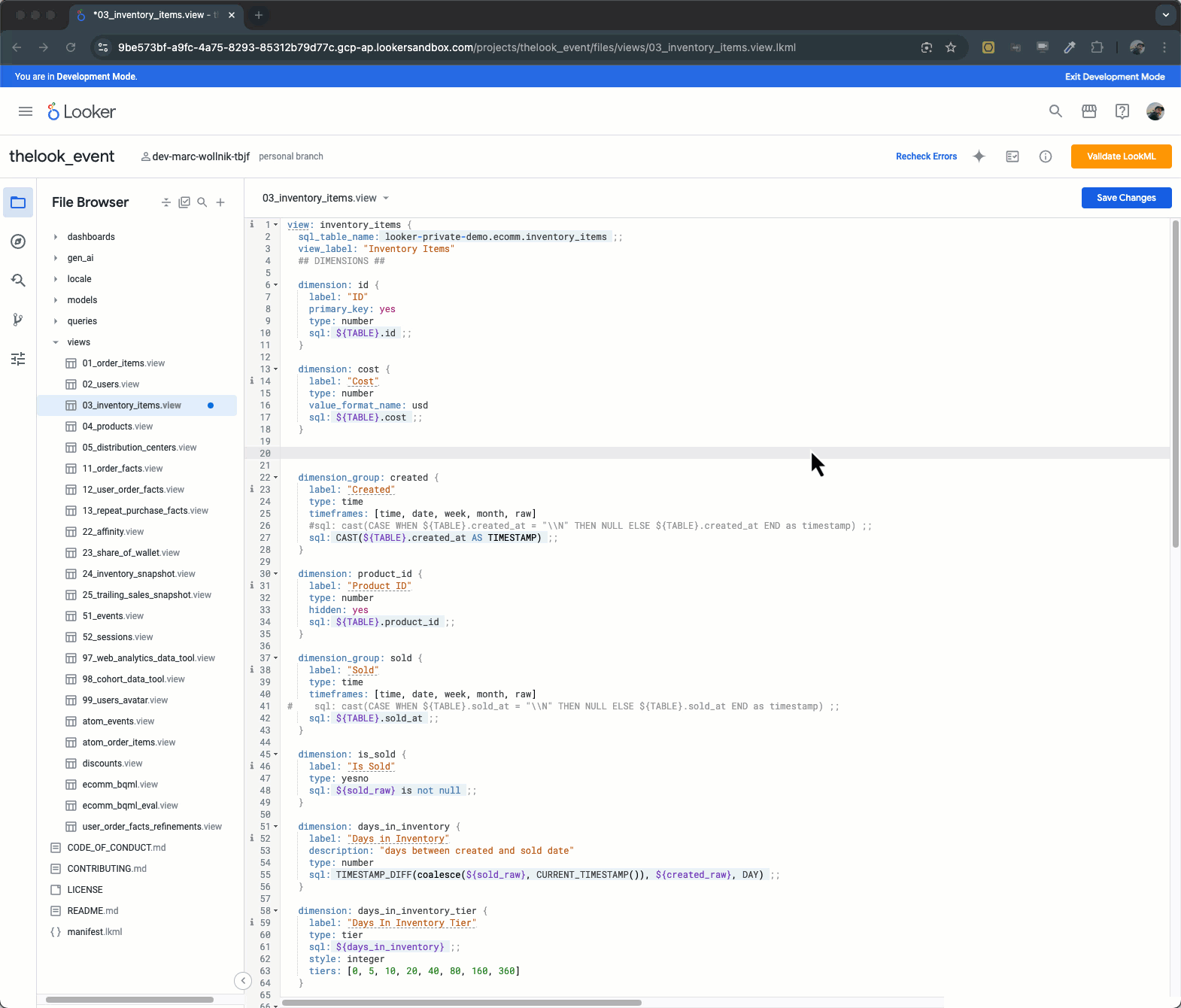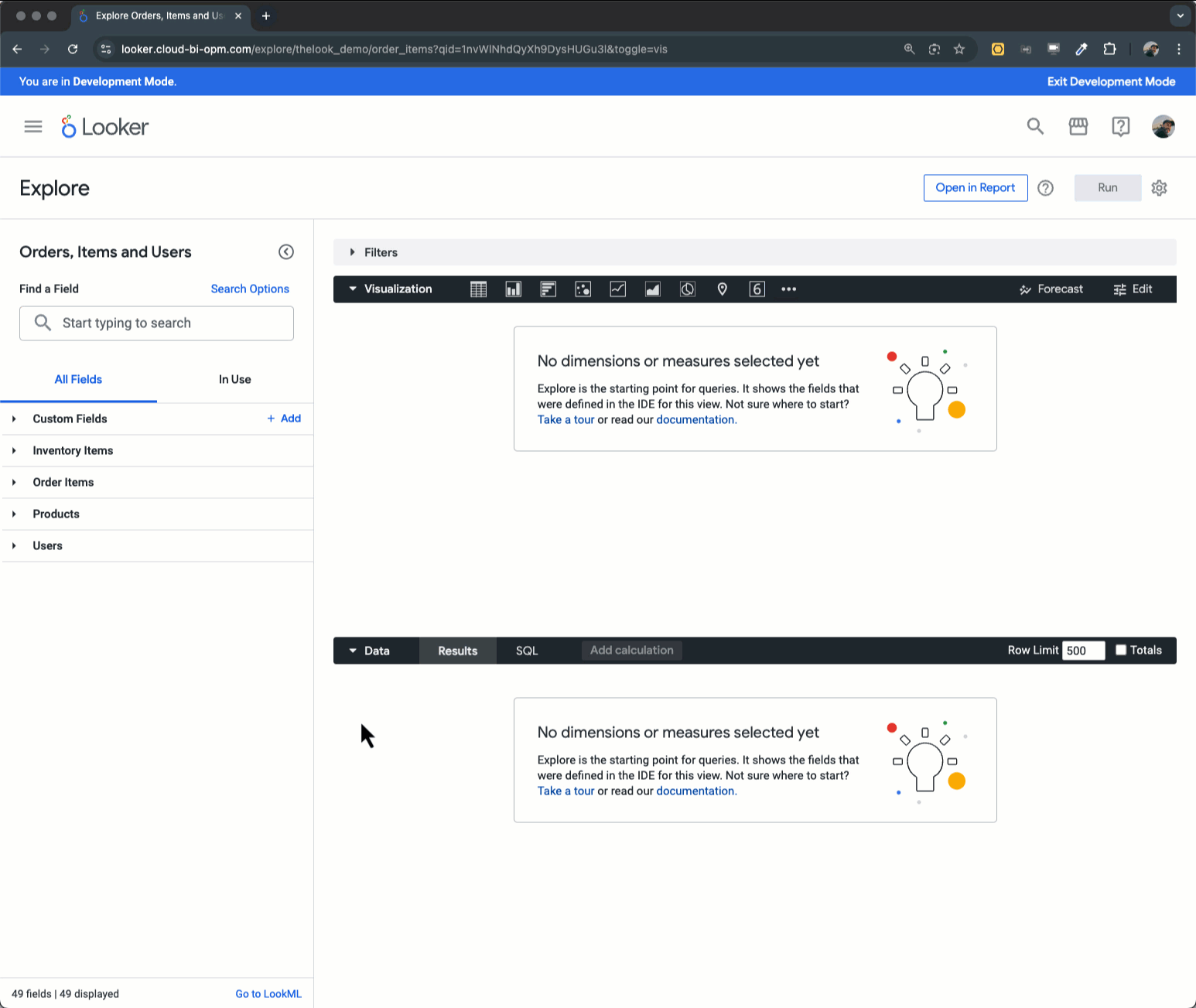Today's business intelligence (BI) landscape is evolving rapidly, as users gain ever more value from their unique datasets with powerful, generative AI-driven data analysis tools. To help accelerate this transformation, and help you create and collaborate across your organization with intuitive AI-driven insights, we are bringing to market two key capabilities of Gemini in Looker to preview: LookML Assistant and Visualization Assistant. These innovations reimagine how analysts and developers can interact with modeling and visualization features, and simplify how they structure and share their data.
Introduced at Google Cloud Next in April, Gemini in Looker changes how you gain insights from the most important data in the world — yours. By using natural language and Google’s AI, you’re on a path to more rapidly discover, collaborate and make decisions across your team, and bring these benefits to everyone in your organization.
Write LookML faster with the LookML Assistant


Generating a new measure using LookML assistant
LookML, short for Looker Modeling Language, is Looker's version-controlled semantic layer that acts as an abstraction layer between your data and business users, providing a consistent and reliable way to access and analyze information. This simplifies data governance and helps ensure data integrity across the organization. LookML Assistant can help you get started with LookML and accelerate your workflow by simplifying the code-creation process, providing guidance and suggestions. You can ask LookML Assistant to create dimensions, dimension groups, measures, or for other code suggestions.
To get started with LookML Assistant, enable development mode and navigate to a project in your IDE and click on the Gemini icon, or learn more from our Help Center.
Generate visualization customizations using natural language


Applying conditional formatting with a text-based prompt using Visualization Assistant.
You can also tap into Looker’s Chart Config Editor to fine-tune the appearance and behavior of your visualizations by directly manipulating the underlying JSON code. This feature provides extensive customization options beyond standard visualization settings, so you can create more appealing and informative charts and graphs.
Today we are expanding this ability with the debut of Visualization Assistant in preview, making it easier than ever to create customizations on top of Looker’s out-of-the box visualizations. Instead of searching through documentation to find the right JSON parameters, just ask Gemini in Looker for what you need, using natural language to customize your visualizations.
To get started using Visualization Assistant, create a visualization in a Looker Explore and choose an out-of-the-box chart type such as column, bar, or line. Then, choose the Visualization Assistant button in the visualization settings bar. Gemini in Looker will ask you what you would like to customize. Insert a prompt or select a pre-composed suggestion and it Gemini writes the customization code. If you like what you see, apply the settings, and your new visualization is live.
Gemini in Looker is designed to accelerate your every day data interactions and let you chat with your data to bring it to life. To start using LookML Assistant and Visualization Assistant today in Looker, you can learn more from the documentation. To get started with Looker, visit http://cloud.google.com/looker.
Posted in 3 months ago
29
3 months ago
29